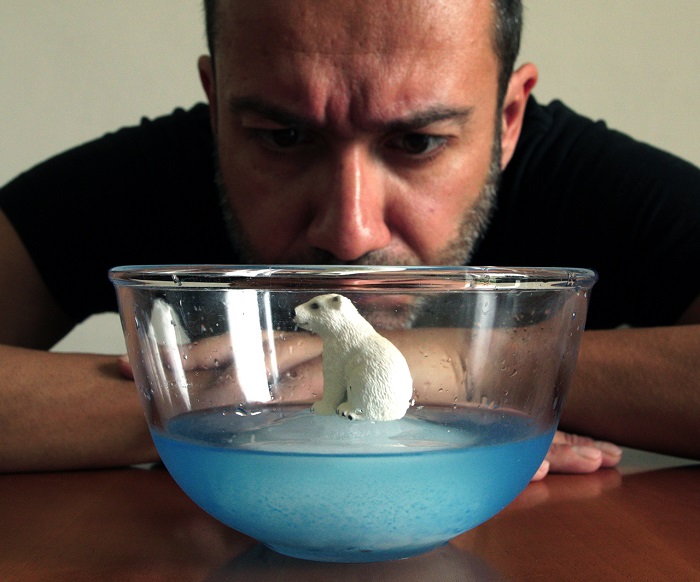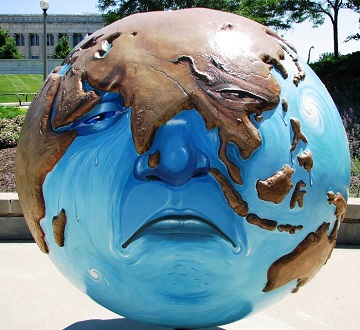
Climate Crisis activism is heating up.
“We want a better environment!”
“When do we want it!”
“NOW!” …Seems to be the widespread sentiment.
The jargon and the social justice warriors are treating climate change as if it were “our World War II” according to newly elected Democratic Socialist Alexandria Ocasio Cortez. Climate activism also appears similar to a fast-growing religion. Those who encourage thoughtful debate are deemed “climate deniers.” But thoughtful debate should be encouraged on every issue. Since when was it not okay to be thoughtful?
There are many heavy-hitters on the side of renewables. Elon Musk, CEO and founder of Tesla Motors put it succinctly, “It doesn’t make sense for us to mine the world’s supply of fossil fuels and put all of the carbon from those fuels into the atmosphere.”
The New Green Deal and Salt Lake City?
While Utah Stories and our writers are certainly pro-environment, many climate activists choose to ignore facts and especially examine the issue in terms of performing a cost/benefit analysis.
Salt Lake City Mayor Jackie Biskupski recently announced that by 2032, Salt Lake City will operate on 100% renewables. The City will achieve this goal by making nearly all city vehicles 100% electric and making buildings LEED certified and operate using far less electricity. Mayor Biskupski also wants to invest city dollars building solar arrays on top of city buildings, hopefully making them net-zero emission buildings.
This all sounds very nice. However, to devote large amounts of taxpayer dollars to electric vehicles and solar arrays will do little to cut state-wide CO2 emissions. But there is a bandwagon when it comes to climate activism and more political leaders want to jump on board to score political points. Further, the overall investment of city tax-dollars on this initiative is short-sighted without proper debate.
About twenty Utah Mayors wrote a joint Op-ed to the Salt Lake Tribune, indicating that they are all on the “investing in renewables” bandwagon. The mayor of Beaver, Utah has an interesting plan to tap much more into their geothermal resources. While renewable energy sources score political points, there are facts that tend to be overlooked.
Tesla’s Future
Without a doubt, Elon Musk and Tesla are producing a viable and cleaner alternative to internal-combustion engines which will offer cleaner air in concentrated city areas. If everyone in Utah were driving Teslas then our inversion days wouldn’t be as severe as they are now. However, there are two important environmental factors that many green-energy proponents ignore: electricity isn’t green unless it’s produced from renewable sources and massive numbers of electric batteries produce their own environmental problems. Our world cobalt supply for batteries is about to be depleted and they will need to begin mining cobalt from the ocean floor.

Currently, Utah has been on a building spree producing wind farms, solar arrays and even investing in geothermal energy. These initiatives, along with the generous tax credit residents receive who purchase all-electric vehicles, and further tax credits for solar panels are a step in the right direction. However in the past seven years, our state has managed to drop from 92 percent fossil fuel dependency for our electricity to 85 percent, a decrease of seven percent in eight years despite state, local and residents massive investments into solar. This percentage only includes electricity, the fact that we heat our homes using the fossil fuel of natural gas is overlooked.
Most of Utah’s electricity is produced by coal-fired power plants in Central Utah. These plants emit a great deal of CO2 into the atmosphere. If every vehicle in Utah were electric, these plants would still need to exist. Utah is home to many data centers for Amazon, eBay, Microsoft, and the NSA. These centers chose Utah because the relative cost of our electricity is very cheap compared to other states due to these coal-fired power plants. If we want to keep and maintain these data centers we need to keep burning our cheap coal.
The only energy source that even comes close to producing the same kilowatt hour per cost of fossil fuels is nuclear power. Nuclear power has downsides, the spent fuel rods need to remain safely stored for thousands of years. But France generates the majority of their power from nuclear power and they have yet to have even a minor catastrophe.
If we ignore nuclear power—as we are —and simply choose to invest in solar and wind, the cost to reach Mayor Biskupski goal of 100% renewable would bankrupt the City and the State. There is zero chance we can reach that goal because the investment would be in the billions.
UN advisor Bjørn Lomborg examined what types of investments offer the greatest overall sustainable improvement to our climate and economies by comparing specific returns on investment. Every dollar spent on “green initiatives” is a dollar taken from another category where dollars might be better spent improving the environment. Lomborg has spent years analyzing the cost/benefit per dollar the UN and World Bank spends. Lomborg found that investments in curbing CO2 emissions does not produce nearly the same environmental benefits if, for example, we invested in reducing farm dependency on nitrates and chemical fertilizers.
As pointed out in the January Utah Stories Magazine, overuse of fertilizers is contaminating our groundwater and destroying our oceans and river ecosystems, creating dead zones where fish and ecosystems are unable to survive. If our mayors throughout Utah focused instead on improving Utah’s agriculture to become more sustainable and less dependent on nitrate (petrochemical) fertilizer, this would be a far better investment to help our environment than investing in solar arrays.
If the money spent on solar were instead diverted to nuclear the cost/benefit would be far greater per kilowatt hour produced. Solar simply produces very little power per dollar spent when compared to nuclear or fossil fuels. Utah needs to invest wisely in the future. Certainly, environmental concerns are the greatest factor in our future standard of living in Utah. But the cost to benefit analysis should always be a part of the discussion, rather than “bandwagon politics.”
A Better Investment?
For eight years now Salt Lake City and Utah leaders have been discussing how Salt Lake needs a “food hub.” This popular concept in other cities uses tax dollars to build a central repository for local food. This allows for farmers to have one central area to wholesale their produce for greater distribution to local residents public schools and local restaurants. Food hubs exist in cities such as Portland, Seattle, and Denver. They especially benefit public schools from a massive increase of supply in fresh, local, nutritionally-dense food for students.
Currently, Utah is hugely dependent on other states and Mexico for our food. This requires massive diesel trucks to travel along I-15 polluting our air and deteriorating our roads. If the City and State chose to invest instead in “local food hubs” this could dramatically reduce our dependence on imported food and eliminate the huge amount of petrochemicals required by both factory farms and the diesel trucks required to ship us our food.
Cities should be crying to state leaders for more food hubs. These hubs could improve conditions so that more Utah farmers can earn higher profits and help more Utahns to enjoy fresher and healthier food than we currently have. Nearly all produce harvested loses about 60 percent of its nutritional value after just seven days after harvest. It might look fresh and healthy, but if it came from another state it’s 40% less healthy than if it were grown locally.
More stories on Utah air pollution:
Inversion Alert! Never Trust Air You Can See – Update on Utah’s Red Air
Investigation: Will UTA’s massive investment pay dividends with cleaner air?






